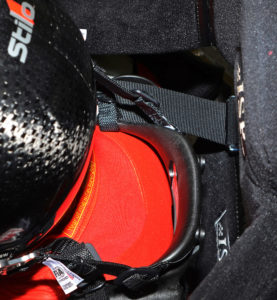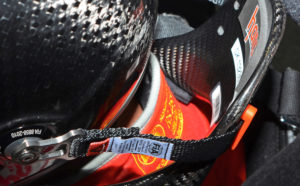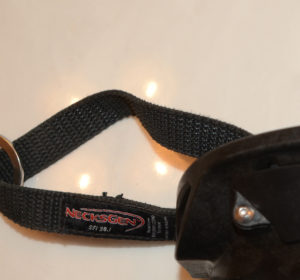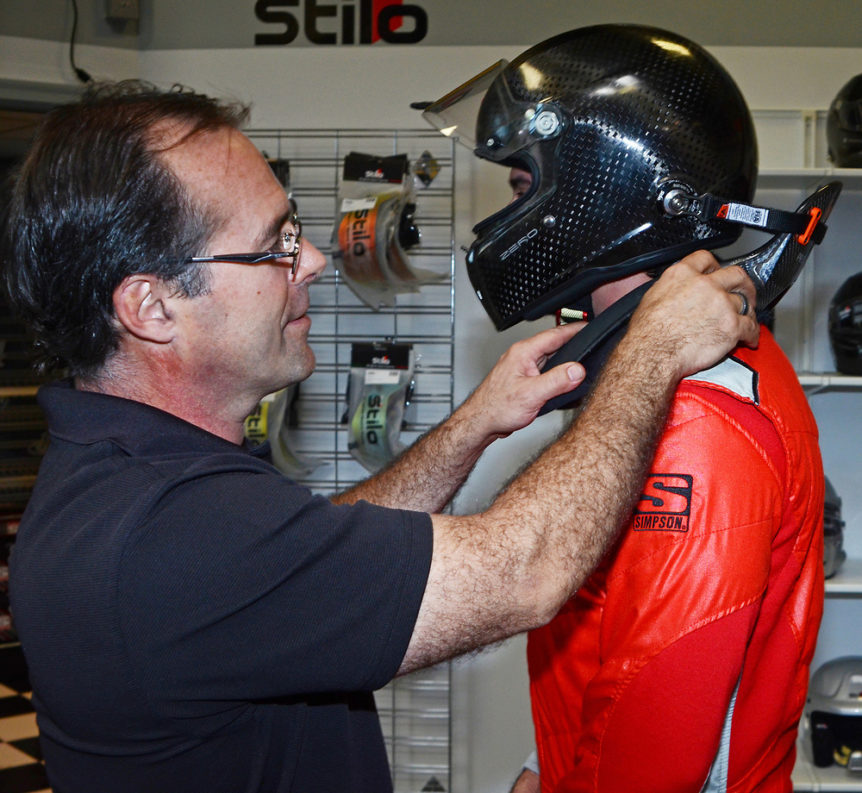How to measure head-and-neck restraint system tethers.
By Jason Beck and Speedway Illustrated Staff
Your head-and-neck restraint system cannot protect you as well in a crash if the tethers are not adjusted for length.
“The easy way to trick the HANS Device is if the tethers are too long,” says Trevor Ashline, vice president of engineering and product development at Simpson Performance Products. “If [the tethers] don’t catch at all, it is not effective.”
Simpson produces the HANS and the Simpson Hybrid, both NASCAR-approved devices. Those and other SFI 38.1 devices offer tethers of varying lengths. For instance, tethers for the HANS Device range from 13.5″ to 19″ long.
Ashline says correct tether length depends on the driver’s body, seat placement, and even the type of car being raced.
“As the seat angle increases, the tether loses slack,” Ashline says.
This means a sprint car racer who sits straight up in the car may require shorter tethers than a late model racer with a seat that lays back more. Drivers may also want more or less support. Monster truck competitors, who take many consecutive soft impacts, prefer almost no slack in their tethers. Short-track racers, however, prefer a bit more movement.
HMS Motorsport’s Flex head-and-neck restraint is designed to fit racers in a variety of seat angles, and comes with only one tether length (18″). Company spokesperson Rory Overmyer says the devices come in medium and large widths, and testing the floating tether length is simple.
“Usually you can pinch it and get about 1″ of slack or so,” Overmyer says. “[The driver] will be able to move pretty far forward before the tethers catch the head…you should have a full range of motion, especially with the belts all the way tightened.”
Make sure your tethers are the proper length and your head-and-neck restraint works as designed. Follow this step-by-step guide.

With the Simpson Hybrid device, seen here, the tethers should have no slack at all when the driver’s neck is extended. They should tension within 2-1/2″ of forward head movement.

This is the proper tether length for a HANS device. Notice there is less than 1″ of slack with the driver’s neck fully extended.

The NecksGen device has a different measuring process. With the driver strapped in the car, pull all of the tether slack to one side and pinch the tether into a loop. There should be no more than 1″–3″ of slack. Tethers are available in lengths from 17″–26″.

